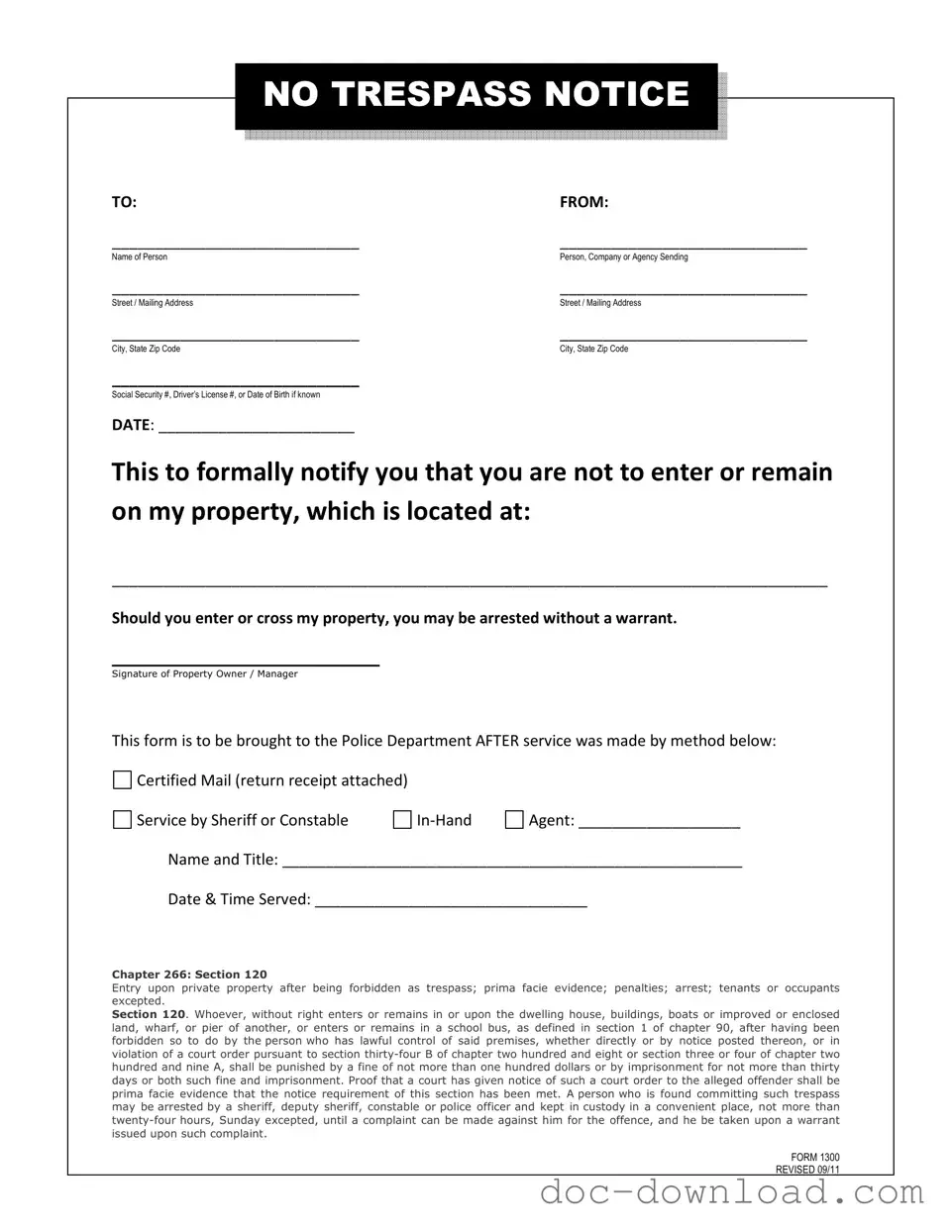A Cease and Desist Letter serves a similar purpose to a No Trespassing Letter by formally requesting that an individual stop certain actions that infringe upon another's rights. This document is often used in disputes involving harassment, copyright infringement, or other unwanted behaviors. By sending this letter, the sender aims to resolve the issue without resorting to legal action, while also documenting their request for future reference.
An Eviction Notice is another document that shares similarities with a No Trespassing Letter. This notice is used by landlords to inform tenants that they must vacate the property due to lease violations or non-payment of rent. Like the No Trespassing Letter, the Eviction Notice serves as a formal communication, outlining the reasons for the eviction and the timeframe in which the tenant must leave.
A Demand Letter is similar in that it communicates a request or requirement to another party. This letter typically outlines a specific action that must be taken, such as payment of a debt or cessation of harmful behavior. Like the No Trespassing Letter, a Demand Letter serves to document the sender's position and intentions, often as a precursor to further legal action if the request is ignored.
For those dealing with property transfers, understanding legal documents such as a Quitclaim Deed is essential. A Colorado Quitclaim Deed provides a straightforward way to transfer property ownership without guaranteeing title validity. If you need assistance with this process, you can find a useful resource at quitclaimdeedtemplate.com/colorado-quitclaim-deed-template, which offers a convenient template to help you complete the necessary paperwork.
A Property Access Agreement is another document that can be compared to a No Trespassing Letter. This agreement outlines the terms under which one party may enter another's property. It establishes boundaries and conditions for access, thus preventing unauthorized entry. While the No Trespassing Letter prohibits entry, a Property Access Agreement defines when and how entry is permissible.
A Notice of Violation can also be likened to a No Trespassing Letter, as both documents serve to inform individuals of their non-compliance with specific rules or laws. A Notice of Violation is often issued by a government authority to address issues like zoning or building code breaches. It provides details on the violation and may require corrective action, similar to how a No Trespassing Letter warns against unauthorized property entry.
A Letter of Intent to Sue is akin to a No Trespassing Letter in that it expresses a serious concern about a person's actions. This letter notifies the recipient that legal action may be pursued if the behavior does not change. While the No Trespassing Letter focuses on property rights, the Letter of Intent to Sue addresses broader legal grievances, both aiming to resolve issues before escalating to court.
A Notice to Quit is another document that bears resemblance to a No Trespassing Letter. This notice is used in landlord-tenant relationships to inform tenants that they must leave the premises due to lease violations. Similar to the No Trespassing Letter, it serves as a formal notification that outlines the reasons for the request and the timeframe for compliance.
Finally, a Letter of Warning is comparable to a No Trespassing Letter as both serve to alert individuals to their inappropriate actions. A Letter of Warning is often issued in workplace settings to address misconduct or policy violations. It aims to correct behavior without immediate disciplinary action, just as a No Trespassing Letter seeks to prevent unauthorized access without resorting to law enforcement initially.

